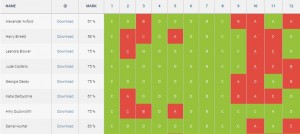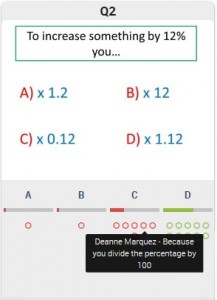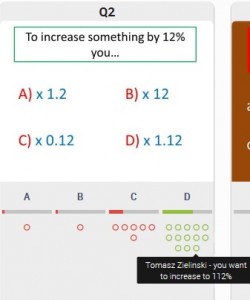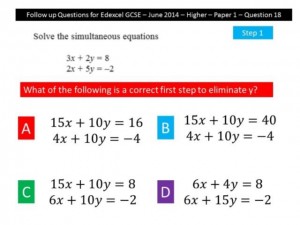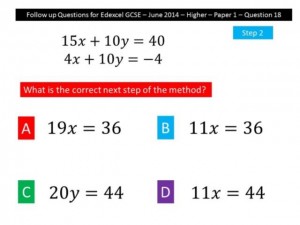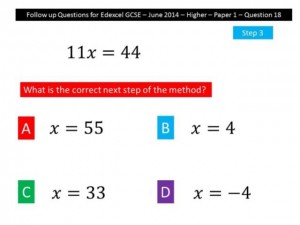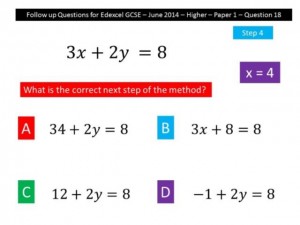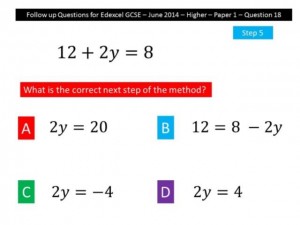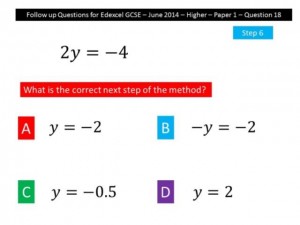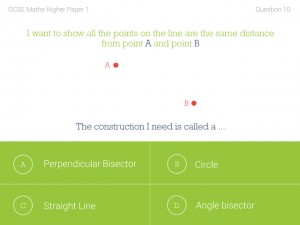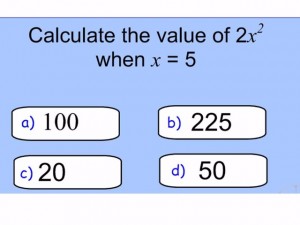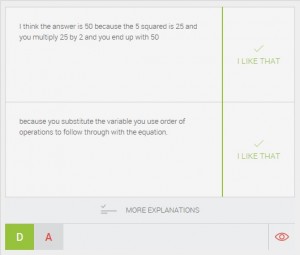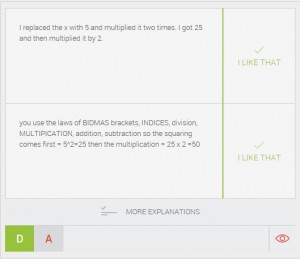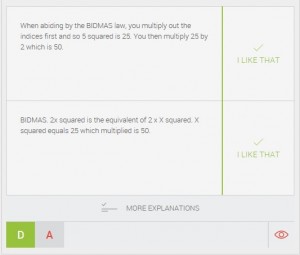The first GCSE Maths exam is drawing ever nearer. If your students are anything like ours, they will be more than a little fed up of doing past exam papers. And if you are anything like me, you will be sick of marking them. So, I just wanted to remind you of the free Diagnostic Questions GCSE Maths papers we have on the site. These are complete Higher GCSE maths papers, broken down into manageable 20 question quizzes, with the content and challenge matching what students might expect from the actual paper. They are based on past Edexcel papers, but the content makes them suitable for any other awarding body.
The questions themselves have been adapted into an easy-to-use multiple-choice format, so they don’t reflect the actual appearance of the questions in the exam, but will give you familiarity with the content, contexts and skills required. The quizzes also have four extra advantages over traditional paper based exam papers:
1. They will be automatically marked, revealing the exact areas your students and classes need help on
2. The questions are broken down into single steps, revealing the precise concept within a topic that your students are having trouble with
3. Students writing explanations for their answers will test their depth of understanding
4. Students can benefit by reading explanations given by students from all around the world until they find the magic one that makes sense to them.
Let’s take a look at each of these advantages in more detail
1. They will be automatically marked, revealing the exact areas your students and classes need help on
A traditional Question Level Analysis can take ages to complete. With a Diagnostic Questions GCSE Paper, it is done instantly, immediately showing you which questions you need to focus on:
Automated making is great, but for real depth of knowledge about your students’ levels of understanding, explanations are the key. Each time a student answers a Diagnostic Question they are promoted to give an explanation. You can access these explanations with a click of a button for any troublesome questions, to gain real insight into exactly how deep your students’ levels of understanding are, and the precise nature of their misconceptions:
2. The questions are broken down into single steps, revealing the precise concept within a topic that your students are having trouble with
What does it mean to say a student can’t do simultaneous equations? If you think about the separate skills required to answer a traditional GCSE Maths exam question on simultaneous equations, the list gets pretty long: manipulating algebraic expressions, collecting like terms, adding and subtracting negative numbers, solving linear equations, substitution into formulae, and more. Two students may score 0 out of 5, or 2 out of 5 on a simultaneous equations questions for very different reasons. It is important to diagnose exactly where in the process the misconception or lack of understanding occurs. Only by knowing the precise skill or concept that the student requires help on, can you work with them to help resolve their misconception.
So, in these Diagnostic Questions GCSE Maths Exam Papers, questions are broken down into single skills or concepts. So, a single question on simultaneous equations becomes:
Combining this with the automated marking, QLAs and student explanations described above allows us to identify exactly where in the process students are going wrong, and thus we can intervene effectively.
3. Students writing explanations for their answers will test their depth of understanding
Scientific studies have consistently shown that explaining answers demonstrate and facilitates a deeper level of learning and understanding than simply giving answers. Just take a look at some of the wonderful explanations given by Year 11 students to the following question on constructions:
if you imagine a line joining A and B then a perpendicular bisector of this line would show all the points the same distance away from A and B- imagine some points that are the same distance from A and B they would form a line
it can’t be an angle bisector because there’s no angle it can’t be a straight line because that doesn’t solve anything and it can’t be a circle because it says on the line not around the 2 points
Every point on a perpendicular bisector would be the same distance from A and B. You get a good sense of this because the point exactly half way between A and B is on the perpendicular bisector
using compasses to mark the same distance from each point, and marking where the curves cross. drawing a line using these two points creates a perpendicular bisector at equal distances from the two points
If your students are producing these, you can be sure their depth of understanding of constructions is sound.
4. Students can benefit by reading explanations given by students from all around the world until they find the magic one that makes sense to them.
As well as helping out the student who wrote these wonderful explanations, they are also of great benefit to students who read them. When reviewing their answers to a GCSE Maths Diagnostic Questions Quiz, students can read explanations giving by students from all around the world on any question they are unsure of until they find the magic one that makes sense to them.
This is all done with the click of a button:
Finally, students can use our new Revision Page (available by clicking “revise Now” on their student dashboard when they login), complete with top-quality videos and follow-up quizzes, to support their independent revision. The topics are automatically arranged in order of importance to each individual student, giving a tailor-made revision programme, all for free.
I really hope you and your students find this useful, and happy revising!
The Diagnostic Questions GCSE Maths Exam Paper collection can be found here: https://www.diagnosticquestions.com/Edexcel

